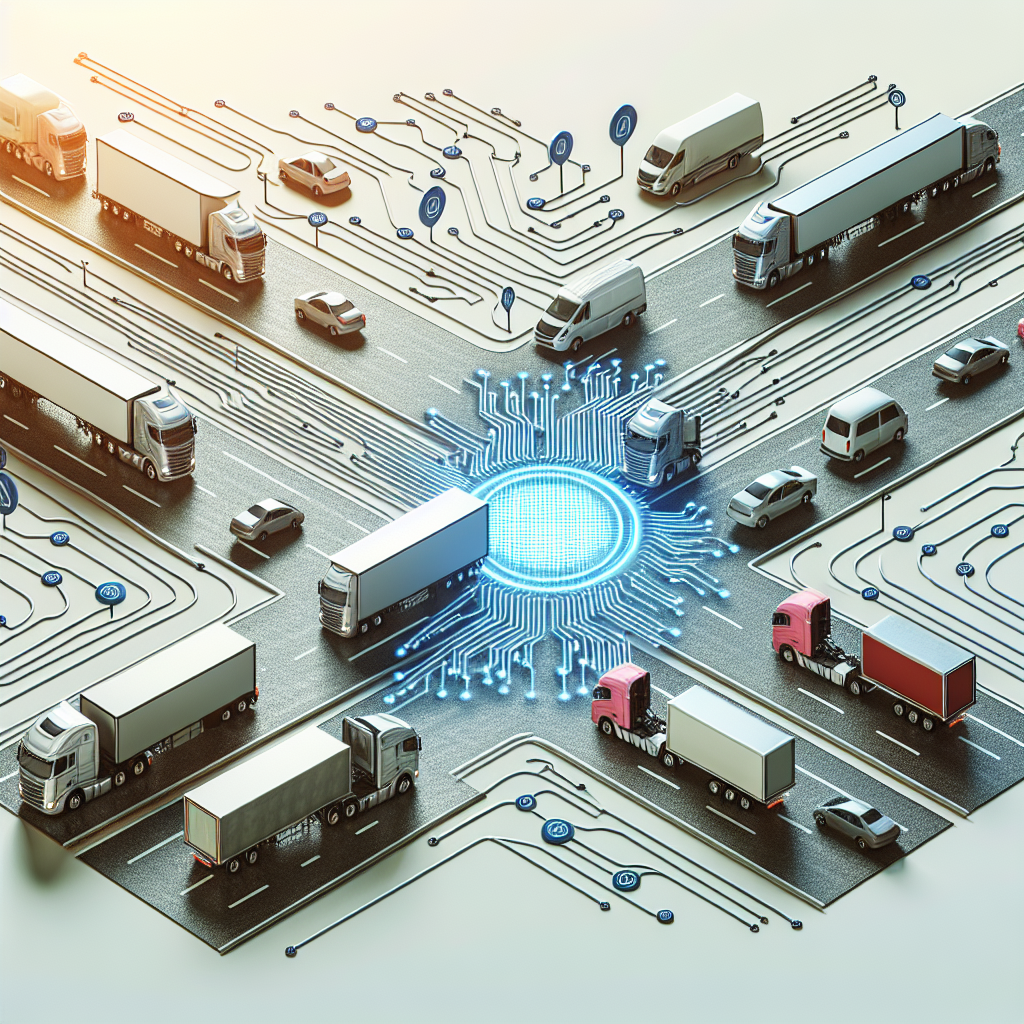In the transportation industry, vehicle routing and scheduling are crucial components of ensuring efficient and timely delivery of goods and services. With the advancement of technology, artificial intelligence (AI) has played an increasingly important role in enhancing vehicle routing and scheduling processes. AI algorithms and machine learning techniques have revolutionized the way transportation companies plan and optimize their routes, leading to cost savings, improved customer satisfaction, and reduced carbon emissions.
One of the key benefits of using AI in vehicle routing and scheduling is its ability to analyze vast amounts of data in real-time. By leveraging historical and real-time data on traffic conditions, weather patterns, delivery constraints, and customer preferences, AI algorithms can generate optimal routes that minimize travel time, fuel consumption, and vehicle wear and tear. This level of precision and accuracy is difficult to achieve manually, especially in dynamic and complex transportation networks.
AI also enables transportation companies to adapt quickly to changes in demand and unexpected disruptions. By continuously analyzing and updating route schedules based on incoming data, AI algorithms can reroute vehicles in real-time to avoid traffic congestion, accidents, or road closures. This proactive approach helps companies reduce delivery delays, improve on-time performance, and enhance overall operational efficiency.
Moreover, AI can optimize vehicle routing and scheduling based on multiple objectives, such as minimizing costs, maximizing resource utilization, or reducing environmental impact. By considering these conflicting goals simultaneously, AI algorithms can find trade-offs and generate solutions that balance competing priorities. This multi-objective optimization capability allows transportation companies to make informed decisions that align with their strategic objectives and business goals.
Another advantage of using AI in vehicle routing and scheduling is its ability to learn and improve over time. By analyzing the outcomes of past routing decisions and incorporating feedback from drivers and customers, AI algorithms can continuously refine their models and algorithms. This iterative process of learning and adaptation enables transportation companies to fine-tune their routing strategies and improve performance over time.
In addition to optimizing route schedules, AI can also enhance driver safety and productivity. By providing real-time navigation assistance, predictive maintenance alerts, and driver behavior monitoring, AI-powered systems can help drivers navigate unfamiliar routes, avoid accidents, and optimize their driving habits. This proactive approach to driver management not only improves safety and compliance but also increases driver satisfaction and retention.
Overall, the role of AI in enhancing vehicle routing and scheduling in transportation is to provide intelligent, data-driven solutions that optimize operations, improve efficiency, and deliver superior customer service. By leveraging AI algorithms and machine learning techniques, transportation companies can achieve significant cost savings, reduce environmental impact, and streamline their logistics operations.
Frequently Asked Questions (FAQs)
Q: How does AI improve vehicle routing and scheduling in transportation?
A: AI algorithms analyze vast amounts of data in real-time to generate optimal routes that minimize travel time, fuel consumption, and vehicle wear and tear. By continuously updating route schedules based on incoming data, AI algorithms can adapt quickly to changes in demand and unexpected disruptions, leading to improved operational efficiency.
Q: What are the key benefits of using AI in vehicle routing and scheduling?
A: The key benefits of using AI in vehicle routing and scheduling include cost savings, improved customer satisfaction, reduced carbon emissions, and enhanced driver safety and productivity. AI algorithms can optimize routes based on multiple objectives, such as minimizing costs, maximizing resource utilization, or reducing environmental impact, leading to better decision-making and strategic alignment.
Q: How does AI optimize vehicle routing based on multiple objectives?
A: AI algorithms can optimize vehicle routing based on multiple objectives by considering conflicting goals simultaneously and finding trade-offs that balance competing priorities. By analyzing outcomes of past routing decisions and incorporating feedback from drivers and customers, AI algorithms can continuously refine their models and algorithms to achieve optimal solutions.
Q: How does AI improve driver safety and productivity in transportation?
A: AI-powered systems provide real-time navigation assistance, predictive maintenance alerts, and driver behavior monitoring to help drivers navigate unfamiliar routes, avoid accidents, and optimize their driving habits. This proactive approach to driver management improves safety and compliance, increases driver satisfaction and retention, and enhances overall operational efficiency.

